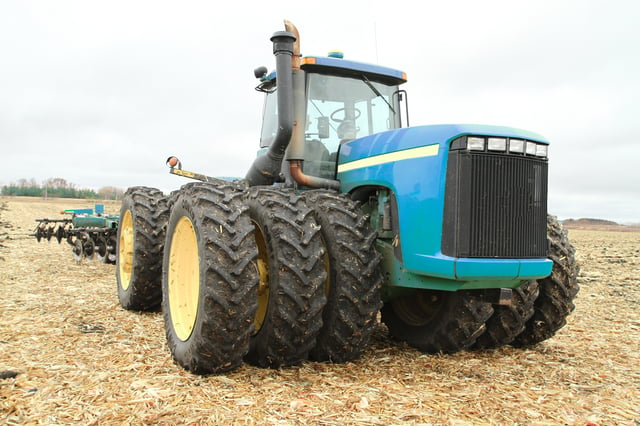Shift Up, Throttle Back, What is it?
Many farmers run their large 4WD tractors while performing tillage work. Generally they find a gear that lets them achieve a desired ground speed and run at WOT. This practice will get the job done, no question. However, operators may see the Gallons Per Hour go up while this work is performed. This is a result of the tractor running more RPM than neccessary for the drawbar requirement. The amount of power needed for most drabar activities is probably not the peak power output of the tractor. This excessive RPM operation is the root cause of wasted fuel. Good news though: Iowa State University, University Extension studied the "Shift Up, Throttle Back" strategy and have given suggestions on how to save fuel. In fact, during testing some tractors measured up to a 20% reduction in fuel useage.

How Does "Shift Up, Throttle Back" Work?
The principle here is fairly simple, reduce RPM to the most efficient speed to perform a given task. The same concept could be used to describe overdrive in a car transmission. Lower gears are required to move a vehicle from a stand still but once the vehicle is in motion and inertia is on your side the final drive ratio changes to allow you to do the same work (traveling at highway speed) at a much lower RPM. This same concept can be applied to pretty much any equipment on the farm that has multiple gears and variable throttle. It is important to note, that excessive reduction in RPM can result in lugging or overloading the engine. This will cause the oppisite result and fuel useage will increase. It is easy to tell if you are lugging your diesel motor; check for high smoke output and a distinct sound of the motor. You can refer to your owner's manual to find the suggested RPM range for peak fuel effiency or check out some of the test results done at Nebraska Test Center Results Page.
When will "Shift Up, Throttle Back" NOT work?
The new IVT or CVT (infinately or constantly variable transmissions) work on an all new platform. They are programmed to adjust your final drive ratio to find the most fuel efficient pairing for the operation. Since there are no manual gears in these, you will not be able to use this practice.
Again, you will not save fuel if you are lugging the tractor.
If you are doing PTO work with a tractor that maintains PTO speed with RPM then you will not find this proctice suitable.
When will "Shift Up, Throttle Back" be most effective?
The largest savings in fuel consumption will be for tractors that are performing drawbar work at lower loads with larger tractors. For example, if you are pulling at 50% of drawbar power in 7th but can maintain ground speed and task operation in 9th gear, you will see that largest reduction in fuel use. However, even smaller tractors can shave operation cost by utilizing this strategy. Afterall, even 3% reduction in overall fuel cost would still be a significant bump in the farms yearly profits.
See for Yourself:
The Iowa State Univeristy, Univeristy Extension published this technique in a blog found HERE and you can download the 2 page overview of the findings by clicking the link below;




